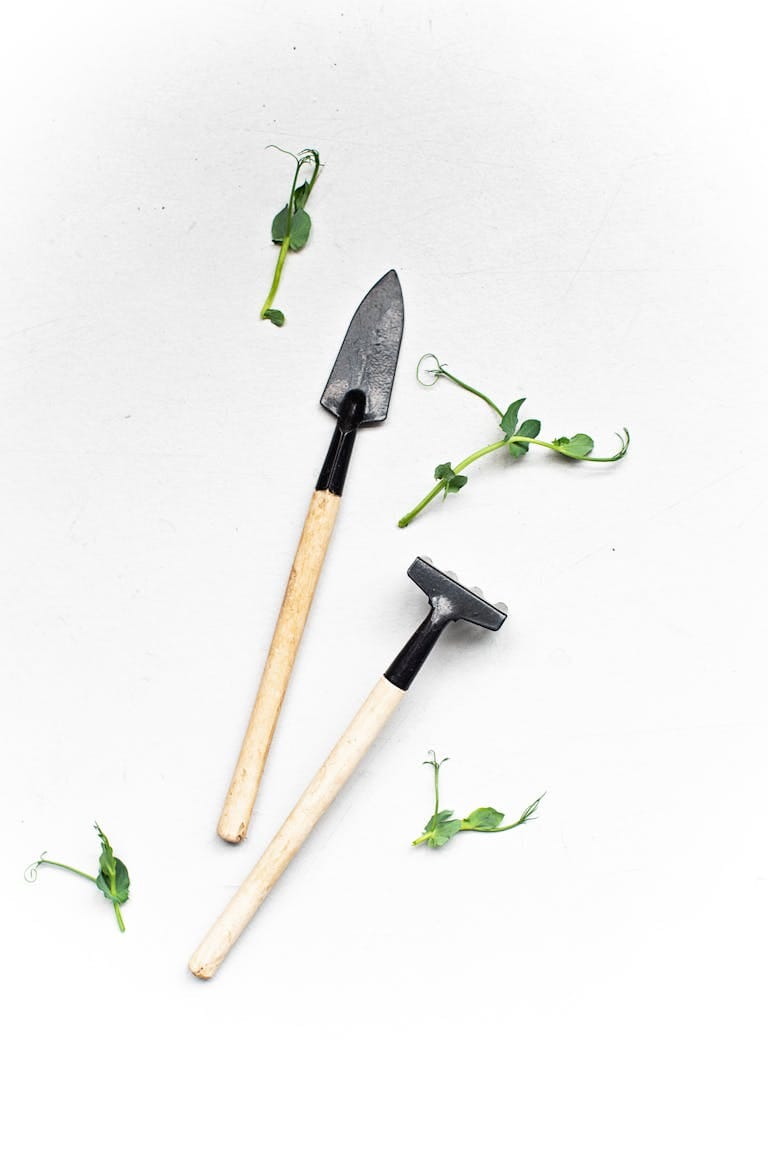Does Overwatering Your Lawn Cause Brown Patches? [Complete Guide]
![Does Overwatering Your Lawn Cause Brown Patches? [Complete Guide] pexels photo 4870796 4870796](https://fitforyard.com/wp-content/uploads/2025/09/pexels-photo-4870796-4870796.avif)
The Lawn Dilemma
Imagine this: you’ve been diligently watering your lawn every morning. You expect lush, green grass, but instead, ugly brown patches start appearing. You ask yourself: “Did I overwater my lawn?”
This is a common concern among homeowners. Many assume brown grass equals drought stress, but the truth is overwatering can damage your lawn just as much as underwatering.
This guide breaks down why overwatering leads to brown patches, how to recognize the signs, and expert tips to restore your lawn’s health.
![Does Overwatering Your Lawn Cause Brown Patches? [Complete Guide] does overwatering your lawn cause brown patches, Close-up of garden hose spraying water on lush green grass with vivid splash effect.](https://fitforyard.com/wp-content/uploads/2025/09/pexels-photo-666013-666013.avif)
Can Overwatering Really Cause Brown Patches?
Yes, overwatering your lawn can cause brown patches. Here’s why:
- Oxygen Deprivation: Grass roots need oxygen. Waterlogged soil suffocates roots.
- Fungal Growth: Excess water creates the perfect environment for lawn fungi such as brown patch disease, Pythium blight, and dollar spot.
- Thatch Buildup: Overwatering promotes shallow root growth and thatch accumulation, making grass more vulnerable.
- Nutrient Leaching: Too much water washes away nitrogen and essential minerals, starving your lawn.
In short: Too much love (water) kills your lawn slowly.
How to Tell if Brown Patches Are from Overwatering
Brown spots can come from many causes, so it’s important to diagnose correctly. Here’s how to know if it’s from overwatering:
| Symptom | Likely Overwatering Sign |
|---|---|
| Mushy soil that feels spongy when you walk | ✅ Yes |
| Algae or moss growing | ✅ Yes |
| Brown areas with ring-like fungal growth | ✅ Yes |
| Grass pulls up easily with shallow roots | ✅ Yes |
| Uniform brown patches instead of scattered | ✅ Often |
| Dry, crispy grass blades | ❌ Likely underwatering |
![Does Overwatering Your Lawn Cause Brown Patches? [Complete Guide] does overwatering your lawn cause brown patches, hose, water, splash, nature, spray, lawn, field, watering, outdoors, man](https://fitforyard.com/wp-content/uploads/2025/09/gcc12ee3d3222cf0f47c030f1b2251bbea612b8ded1740b4d3cf2b0e7a49bb050ccc78e96b6fe461290265e71b49965a4f48651fa443c5dfe508bb2bb853774db_1280-6592373-1024x682.avif)
Other Common Causes of Brown Spots in Grass
Overwatering is just one culprit. Brown patches may also come from:
- Dog urine spots (high nitrogen concentration)
- Insect damage (grubs, chinch bugs)
- Heat stress or drought
- Compacted soil
- Lawn mower damage (dull blades tear instead of cut)
- Chemical burns (fertilizer overuse)
📌 Pro Tip: If only certain spots turn brown while others thrive, chances are it’s not just watering but a combination of issues.
![Does Overwatering Your Lawn Cause Brown Patches? [Complete Guide] does overwatering your lawn cause brown patches, A garden hose sprays water onto a lush green lawn on a sunny day.](https://fitforyard.com/wp-content/uploads/2025/09/pexels-photo-4870798-4870798.avif)
How Much Water Does a Lawn Actually Need?
A healthy lawn usually needs 1–1.5 inches of water per week, including rainfall. That means:
- Deep, infrequent watering is better than daily shallow watering.
- Aim for 2–3 watering sessions per week, not every day.
- Watering deeply encourages roots to grow down, making grass more drought-tolerant.
💡 Use a tuna can test: Place an empty tuna can on your lawn. When it fills with about 1 inch of water, you’ve watered enough.
Best Watering Practices for a Healthy Lawn
To prevent overwatering and brown patches, follow these lawn care watering tips:
- Water early in the morning (4–9 am) to reduce evaporation and fungal risk.
- Avoid evening watering, since wet grass overnight invites fungus.
- Adjust to weather: Skip watering after heavy rain.
- Check soil moisture: Use a screwdriver test. If it goes in easily, the soil is still moist.
- Use smart irrigation systems that adjust based on soil and weather conditions.
Step-by-Step Guide: Fixing Overwatered Lawns
If you suspect overwatering, here’s what to do:
- Stop watering for 5–7 days (unless extremely hot).
- Aerate the soil to allow oxygen back into the root zone.
- Apply fungicide if fungal patches are visible.
- Mow at the correct height (don’t cut too short).
- Fertilize carefully after recovery with slow-release nitrogen.
- Reseed bare patches if necessary.
![Does Overwatering Your Lawn Cause Brown Patches? [Complete Guide] does overwatering your lawn cause brown patches, A hand holding a hose watering plants in a lush garden setting.](https://fitforyard.com/wp-content/uploads/2025/09/pexels-photo-4870794-4870794.avif)
Local Factors: Climate, Soil, and Grass Type
Your lawn care routine should also adapt to your location:
- Clay soils hold water longer, which means higher risk of overwatering.
- Sandy soils drain quickly, so they require more frequent watering.
- Cool-season grasses (fescue, Kentucky bluegrass) are more prone to fungal diseases from overwatering.
- Warm-season grasses (Bermuda, Zoysia) tolerate more heat but still suffer from waterlogging.
If you search “lawn care services near me,” you’ll find local experts who understand soil and climate conditions in your area.
FAQs
Q1: Does overwatering grass cause brown spots overnight?
Not usually overnight, but within days, excess moisture can trigger fungal diseases that show up quickly.
Q2: What’s the difference between brown patch disease and overwatering stress?
Brown patch disease has circular patches with darker borders, while overwatering stress looks more uniform and mushy.
Q3: Can sprinklers cause brown spots?
Yes, uneven sprinkler coverage leads to overwatered and underwatered areas.
Q4: Should I water my lawn every day in summer?
No. Deep watering 2–3 times a week is better than daily light watering.
Q5: How do I revive a lawn with brown patches?
Stop overwatering, aerate soil, reseed if needed, and adjust watering schedule.
Final Takeaways
So, does overwatering your lawn cause brown patches? Absolutely. Grass needs balance. Too little water dries it out, too much water suffocates it.
If you see brown spots:
- Diagnose carefully
- Adjust watering habits
- Treat fungus if needed
- Reseed and fertilize for recovery
With the right balance, your lawn can return to that lush, green carpet you imagined.
Want expert guidance? Consider consulting local lawn care services for soil testing and customized watering schedules.
External References / Sources:
Oxygen Deprivation: Grass roots need oxygen.
Waterlogged soil suffocates roots and prevents them from absorbing nutrients properly. Over time, the grass becomes weak, pale, and then turns brown. According to Colorado State University Extension, continually water-logged soils are deprived of oxygen, which is essential for healthy root growth.
Fungal Growth:
Too much moisture creates the perfect breeding ground for fungal diseases such as brown patch. Research from NC State Extension shows that overwatering and prolonged leaf wetness (10–12 hours) greatly increase the risk of brown patch fungus spreading across lawns.






